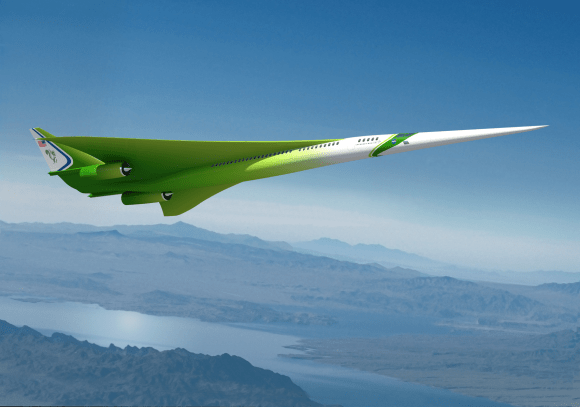
I always feel a little sad whenever I stop and think that NASA’s Space Shuttles are no longer in service. For decades, they served as symbols not only for the pioneering spirit of their mission crews, but for NASA itself, an organization that serves as a gathering point for some of the brightest and boldest scientific minds on the planet.
NASA hasn’t completely gotten out of the high-tech transportation field, though, as it’s moving ahead with a project to develop a supersonic passenger jet. As impressive as its specs are, though, it looks like something quite a bit more down to earth: a root vegetable.
The final Shuttle flight was in 2011, and since then NASA’s been without an iconic vehicle. Even our research attempts to find out what kind of car NASA Administrator Charles Bolden drives to work every day have proved futile.
▼ Until we hear otherwise, we’re just going to assume it’s an ’87 Astro Van.
In late 2010, though, NASA began looking into the possibility of filling the supersonic air travel hole that was created when the Concord was retired in 2003. We’re several years away from being able to book tickets on the high-speed craft, though, as NASA is still looking at differing design proposals from research partners Boeing and Lockheed Martin.
One of the biggest hurdles the project faces is how to suppress the noise that would be made once the aircraft breaks the sound barrier. Differences in wing design and engine placement can affect both the exact pitch and intensity of the sonic boom. Boeing, for example, is leaning towards mounting the engines above the wings, for an effect somewhat like a 21st-century F-4 Phantom.
The advantage to this is that when the sonic boom occurs, the shock waves would travel upwards, reducing the noise heard below.
Lockheed Martin, on the other hand, isn’t convinced this packaging is the most efficient in terms of engine performance. While its version of the supersonic jet shares the long fuselage and pointed nose of the Boeing mockup, Lockheed Martin’s design places the engines underneath a pair of large delta wings.
Lockheed Martin also seems to be going for style points, giving its version some snazzy green livery, as opposed to the monochrome offering from Boeing. However, to some Japanese Internet commentators, the paint scheme doesn’t say “airline of tomorrow” so much as it says “green grocer.”
In other words, they think it looks like a green onion, or as the Japanese say, negi.
“It’s a negi.”
“Totally a negi.“
“All I’m seeing is a negi.”
“Here it comes, the negi jet!”
But hey, this isn’t all bad news. Plenty of people in Japan love negi, as chopped green onion is commonly added to miso soup, ramen, and okonomiyaki. Negi is also strongly associated with virtual idol Hatsune Miku, so if and when Lockheed Martin’s design goes into commercial service in Japan, airlines have a cross-promotional marketing campaign all ready to go.
▼ If ANA found success with its Pokémon jet, there’s no reason they can’t do it again by slapping a Miku decal on the side of a plane.
Sources: Ennori, Jin, NASA
Top image: NASA/Lockheed Martin
Insert images: Hemmings, NASA/Boeing, Wikiwiki, Office Miyajima